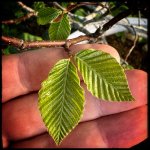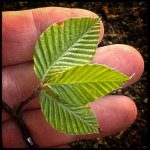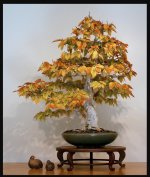CapeCodBonsai
Shohin
It APPEARS that the transition from field soil into a bonsai substrate mix back in late April of this year was successful.

However, I’ve read accounts where folks thought they had success (because their tree leafed out) but apparently the tree had just been surviving off its energy stores and slowly faded as summer progressed. Due to my inexperience, I don’t know if that’s the case with this tree.
The Beech leafed out however, the size of those leaves is extremely reduced . . . scary!



During the potting-up process, I’d washed all of the field soil from the roots. I did VERY LITTLE root reduction at the time. The tree is now in a mix of Akadama, Pumice, and Lava. I have the tree on the north side of an old outbuilding and it is also shaded by a large Norway Maple on its west side.
My questions are:

However, I’ve read accounts where folks thought they had success (because their tree leafed out) but apparently the tree had just been surviving off its energy stores and slowly faded as summer progressed. Due to my inexperience, I don’t know if that’s the case with this tree.
The Beech leafed out however, the size of those leaves is extremely reduced . . . scary!



During the potting-up process, I’d washed all of the field soil from the roots. I did VERY LITTLE root reduction at the time. The tree is now in a mix of Akadama, Pumice, and Lava. I have the tree on the north side of an old outbuilding and it is also shaded by a large Norway Maple on its west side.
My questions are:
- Three months in, is it safe to assume that this tree has survived the initial potting?
- Should I be applying any fertilizer yet?
- Since it’s in a pot that is too large (for me) to move, any suggestions on winter protection? . . . or do I even need protection if it makes it into December?


